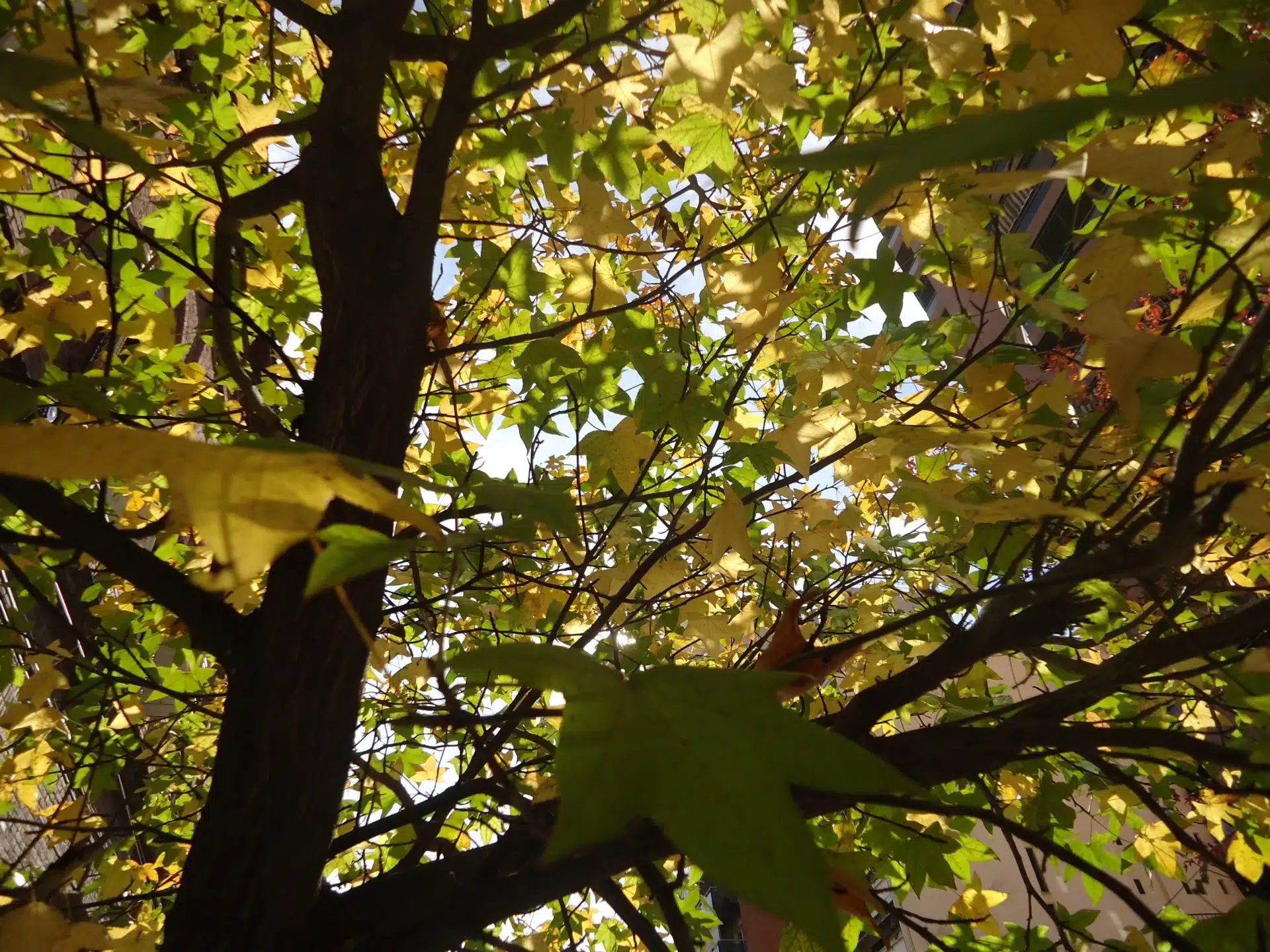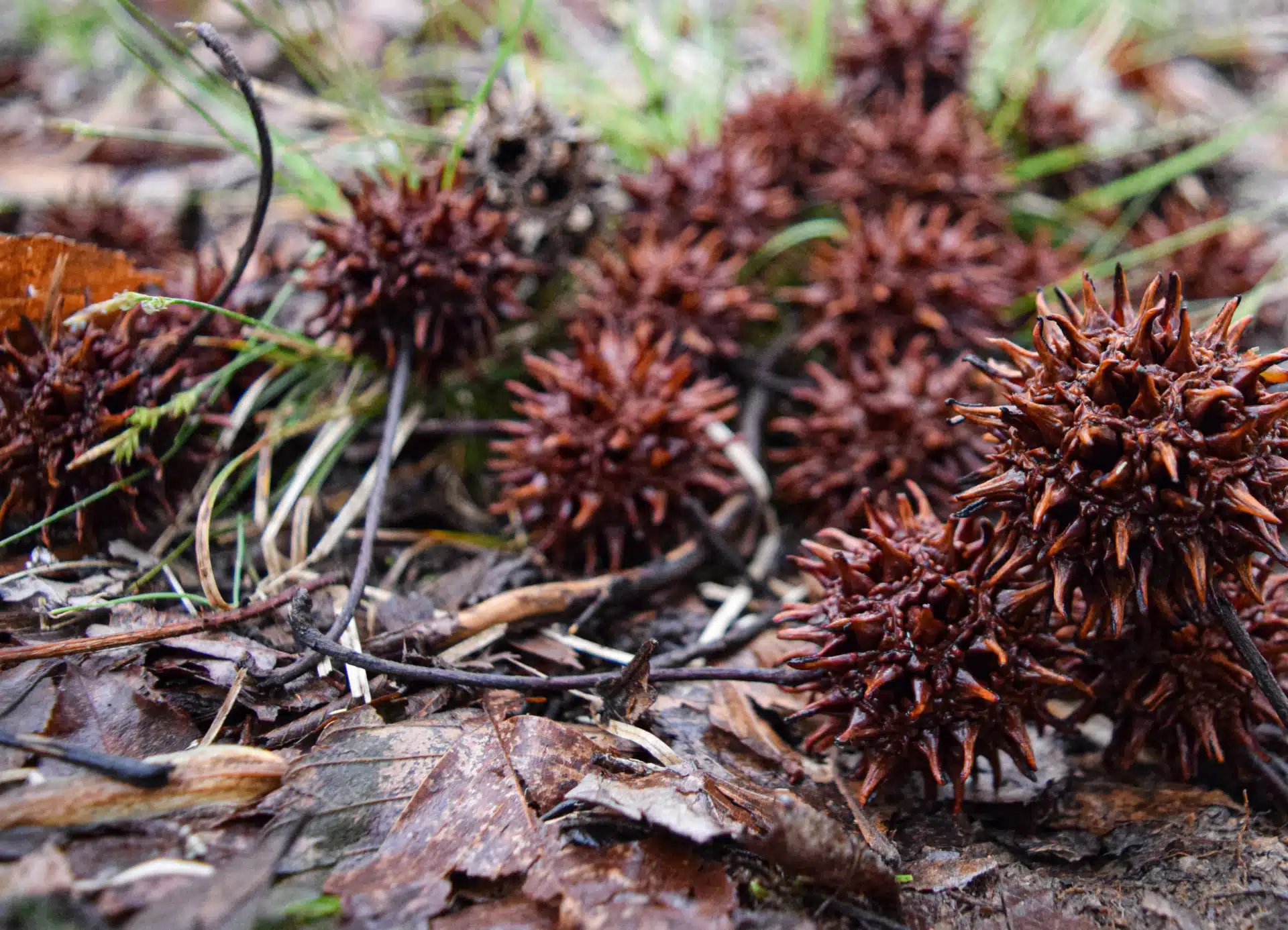Trees
Sweetgum
Liquidambar styraciflua



Liquidambar styraciflua, meaning “liquid amber” and “flowing with gum,” refers to the sweet “gum” that exudes from wounds on the trunk of this member of the witch-hazel (Hamamelidaceae) family. Sweetgum is represented by 56 individuals and 8 cultivars at The Holden Arboretum. Liquidambar styraciflua is native from southern Ohio to central Florida and from southwestern Connecticut to eastern Texas. It is also native from the Sierra Madre of Mexico into the cloud forests of Central America to Nicaragua. The luna moth utilizes sweetgum as one of its larval host species throughout the native range of Liquidambar in the United States and northern Mexico.
In early to mid May the inconspicuous, wind-pollinated flowers appear with the leaves. The foliage is a glossy deep green throughout the summer. Several trees are located by the sidewalk in front of the Warren H. Corning Visitor Center and by the parking lots. Just east of Buttonbush Bog are sweetgum that also display a mix of burgundy, red, orange and yellow from late September to early November. These 60’-75’ trees were received in 1940 as two-year seedlings from the Ohio Agricultural Research and Development Laboratory in Wooster and are likely to be of southern Ohio origin.
Spring planting is recommended as fall planted sweetgum can occasionally suffer from dieback. One tree planted on Oct. 3, 1996 in the Specimen Tree Collection died back to the ground after experiencing a low of only -5°F on Jan. 19, 1997 and continued to die back for four more winters. A sucker finally made it through the winter of 2002 intact. Originating as seed collected wild in southern Illinois in 1992, this tree has rebounded nicely and now measures 28’ x 18’, having yet to produce fruit.
The fruit is 1”-1¼” across, woody, and stays in the trees until early spring. They are often referred to as “gum-balls” since they can stick to lawns and generally get underfoot. The seeds are small but are eaten by many birds, ranging from chickadees to wild turkeys, and by squirrels and chipmunks. The fruit begins to appear on trees 20-30 years of age. Grafted cultivars will produce seed sooner but some seedless or virtually seedless types have been selected. Cherokee is a virtually seedless clone reportedly hardy to USDA Zone 5b and patented in 1997 by Earl Cully of Illinois. It was planted in both the Display Garden and in the Specimen Tree Collection in the spring of 2006. Cherokee now measures 18’-19’ in height with a spread of 8’-11’and has sported good fall color in October and November. ‘Rotundiloba’ is a seedless clone selected in North Carolina in 1930. Hardy to USDA Zone 6b, ‘Rotundiloba’ was planted in the Specimen Tree Collection on 16 Oct. 1990 and made it through the first winter (1°F min.) and the second winter (-1°F) and was in excellent condition at 11’ tall in September 1992 before the winter of 1993 (-8°F on Feb. 25), which killed it. In June 2005 another ‘Rotundiloba’ was planted in the same spot and has survived every winter since including a mid-January 2009 low of -14°F that only resulted in “some frost damage to tips.” That tree, now measures 18’ x 8’ and has not displayed any fall color until November with most of its leaves falling while still green.
Light: Full Sun
Site Selection: Open Spaces (Parks/ Lawns), Wetlands
Tolerances: Air Pollution, Clay Soils, Compacted Soil, Drought, Wet/ Saturated Soils




